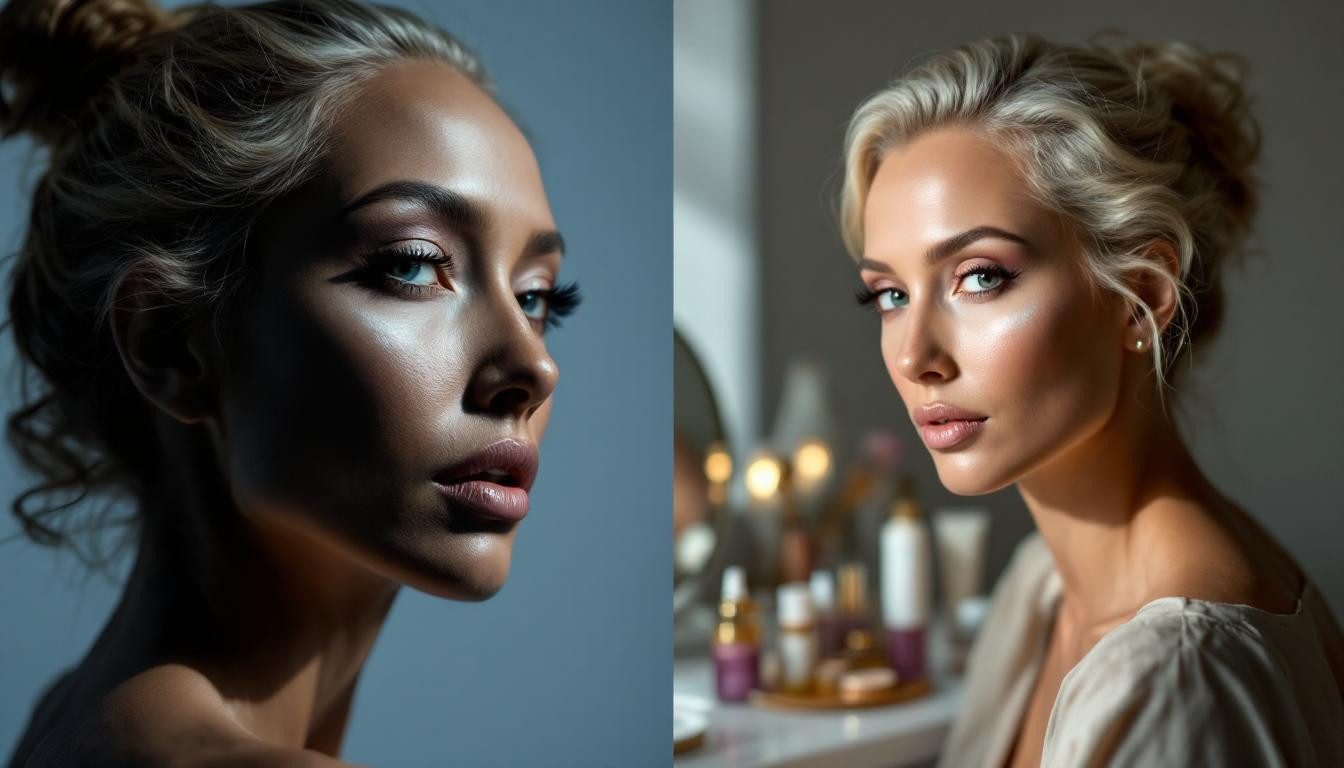I never thought my makeup routine could betray me after all these years. Like many women embracing their 70s this spring, I’ve been reflecting on my beauty journey while sorting through old photos with my grandchildren. The revelation hit me like a summer storm – that sculpted look I’d perfected and proudly worn for a decade had actually been aging me prematurely.
How contouring became my daily mask
Back in 2015, when contouring exploded into mainstream beauty culture, I embraced it wholeheartedly. Every morning, I’d meticulously shade the hollows of my cheeks, jawline, and temples. The technique became my facial armor – giving me confidence through defined features and a seemingly slimmer face.
“Many women developed an emotional dependency on contouring during the 2010s social media boom,” explains Dr. Lisa Donofrio, dermatologist and facial volume specialist. “The problem is that what works on camera at 40 can actually emphasize volume loss at 70.”
The moment I realized my makeup was aging me
It wasn’t until my 70th birthday celebration this April that reality struck. Looking at recent photos beside ones from my 60s, I noticed my once-plump cheeks appeared increasingly hollow and gaunt – not from aging alone, but from a decade of training my eye to see shadows where fullness should be.
This realization parallels what many women discover about their skincare routines. Just as using the same moisturizer for years can accelerate aging, static makeup techniques fail to adapt to our changing faces.
What experts say about long-term contouring
“The secret to a youthful complexion is not just about covering up, but enhancing natural features without looking overdone,” says makeup artist Natalie Jobe. “Contouring should evolve as your face does.”
Charlotte Tilbury, legendary makeup artist, notes: “The right contouring can create the illusion of lifted features, but it’s crucial to blend well and avoid harsh lines – especially as skin matures.”
“Think of contouring like carving a sculpture – the novice creates deep cuts while the master makes subtle impressions that catch natural light.”
How aging changes your contouring needs
As we age, our faces naturally lose volume and elasticity. What worked in our 50s and 60s needs adjustment in our 70s. Consider these shifts:
- Facial fat pads naturally descend and diminish
- Bone density gradually decreases
- Skin becomes thinner and more translucent
- Harsh shadows increasingly read as aging rather than sculpting
My summer 2025 makeup transformation
This spring, I’ve embraced a lighter approach. Instead of heavy contour powders, I’m using cream-based products that mimic natural shadows while adding subtle luminosity – similar to how dermatologists have updated their collagen approaches for 2025.
For areas around my eyes that show signs of sagging, I’ve invested in quality skincare rather than trying to contour away the issue. Many women find that specialized eye creams provide better results than makeup alone.
Beyond makeup: Addressing facial hollows
For those concerned about facial hollowing, modern solutions go beyond makeup:
- Non-surgical fillers like Sculptra that stimulate collagen
- Facial massage techniques to improve circulation
- Strategic skincare focusing on hydration and plumping
Just as women over 60 are discovering innovative hair treatments to enhance their natural silver, there are gentler ways to enhance facial structure without harsh contouring.
Are your beauty habits adding years?
We often don’t realize how our routines affect our appearance over time – whether it’s nail habits aging our hands or contouring emphasizing facial hollows. This summer, take a fresh look at your beauty rituals. Are they enhancing your natural beauty or creating an outdated mask?
Have you been using the same techniques for years? Perhaps it’s time for a refresh that celebrates your face exactly as it is today – beautifully, authentically yours.
